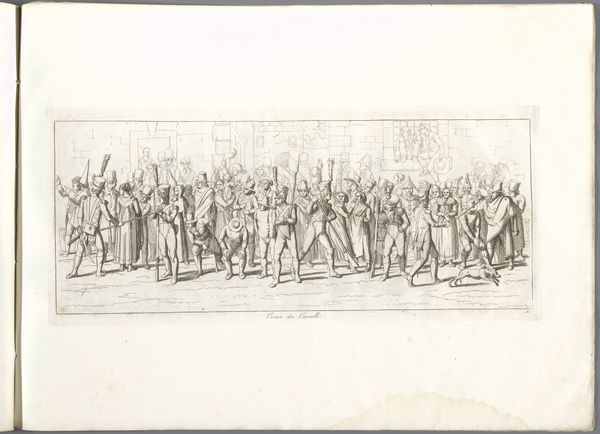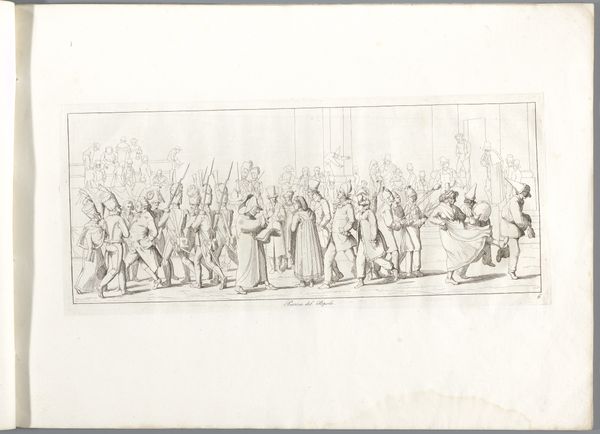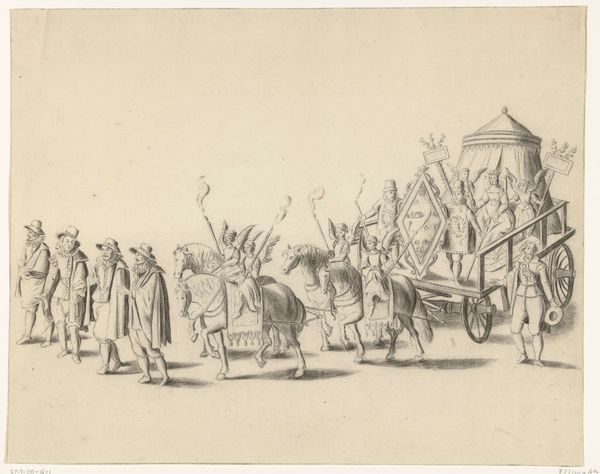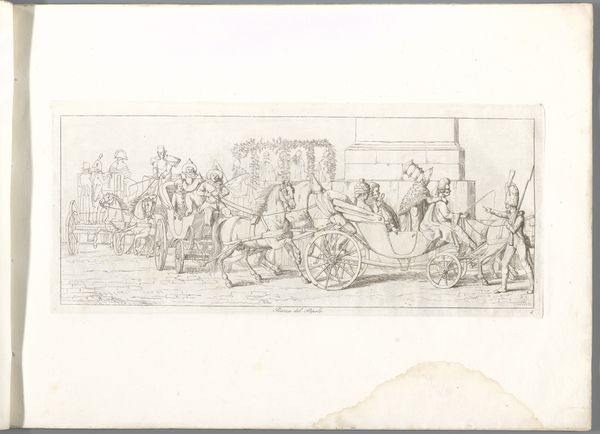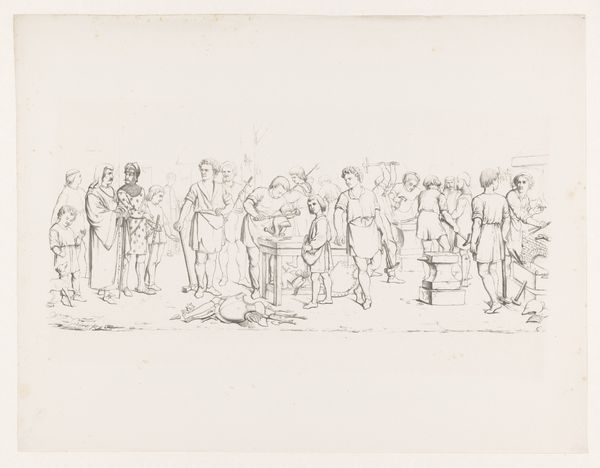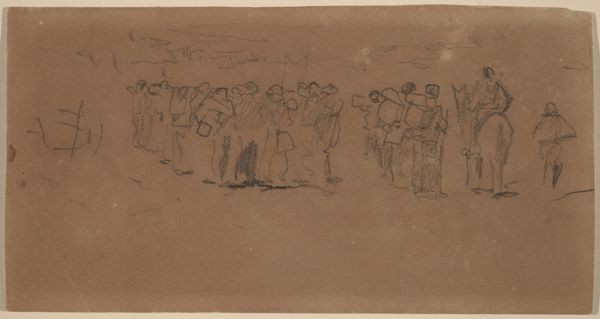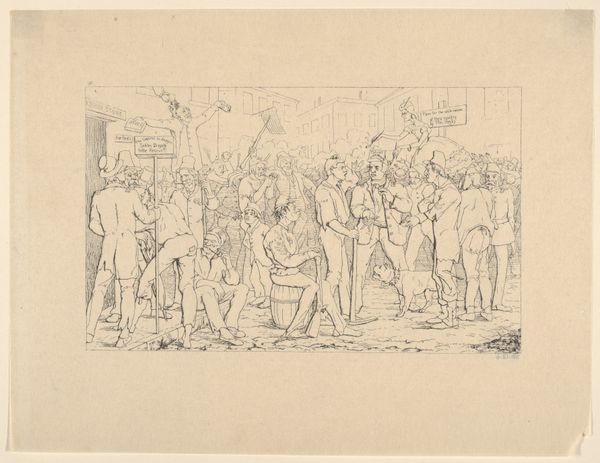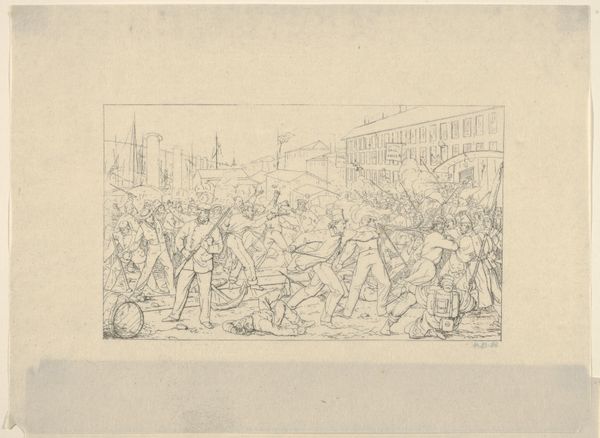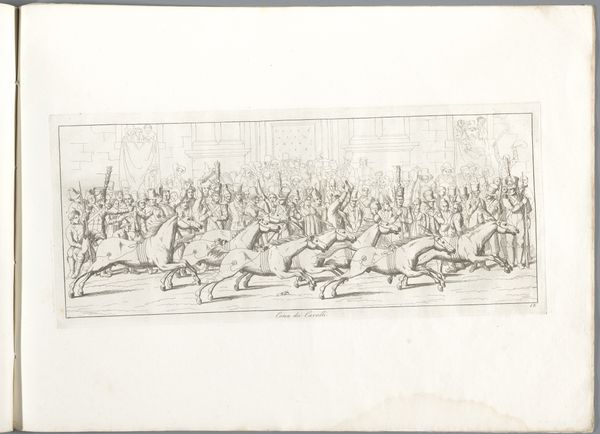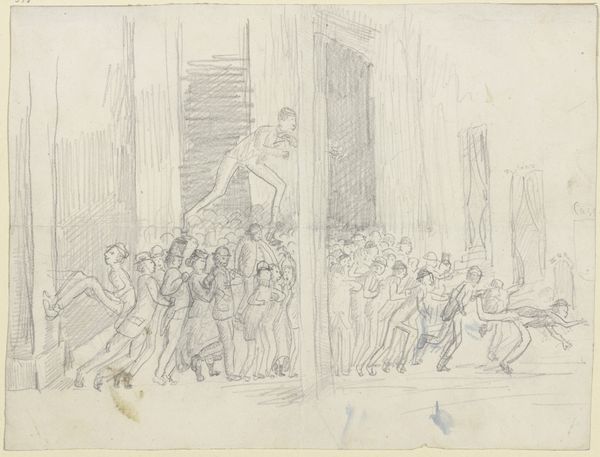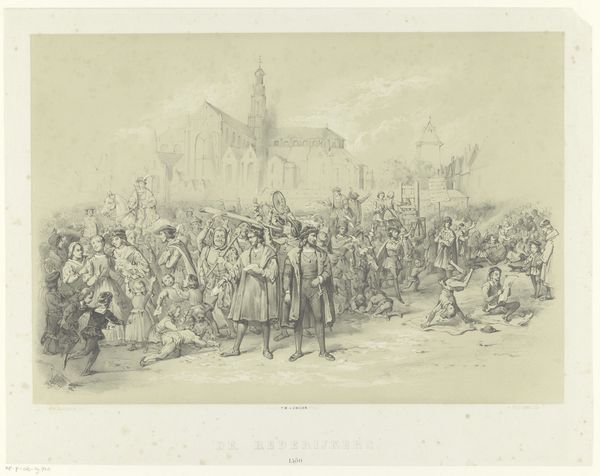
drawing, ink, pen
#
drawing
#
ink drawing
#
narrative-art
#
pen sketch
#
ink
#
romanticism
#
pen
#
cityscape
#
genre-painting
Dimensions: height 205 mm, width 475 mm, height 413 mm, width 568 mm
Copyright: Rijks Museum: Open Domain
Editor: So, this is "Via del Corso," an ink drawing by Carl Gustaf Hjalmar Mörner, created around 1820. It's incredibly detailed, almost teeming with figures. I'm struck by how chaotic yet organized the composition feels. What can you tell me about it? Curator: The sheer volume of figures indeed speaks to the vitality of street life, a recurrent subject during the Romantic period. Have you considered the implications of showing figures in different dress and station mingling in this manner? Editor: I guess it suggests a certain level of social mixing, maybe even commenting on class structures? Curator: Precisely! The "Corso" wasn't merely a street; it was a stage for social performance. But look closely at the smaller dramas playing out: the squabbles, the exchanges, even the figures collapsed on the ground. Are they merely anecdotal, or do they carry symbolic weight? Editor: Hmm, maybe they reflect the instability or perhaps even the anxieties of the time? A kind of romantic ideal meets street realism? Curator: An excellent observation. Each figure is meticulously rendered, their gestures and expressions carefully considered. Doesn't the overall effect create a narrative about societal values, public behavior, or unspoken rules? Think of it as a stage teeming with allegories. What do you see now? Editor: I see it as less of a snapshot and more of a commentary. It feels less like everyday life and more like Mörner trying to capture something bigger. Thank you! Curator: The image becomes a repository of cultural memory. Every era remakes these symbols to mean different things, after all.
Comments
No comments
Be the first to comment and join the conversation on the ultimate creative platform.
